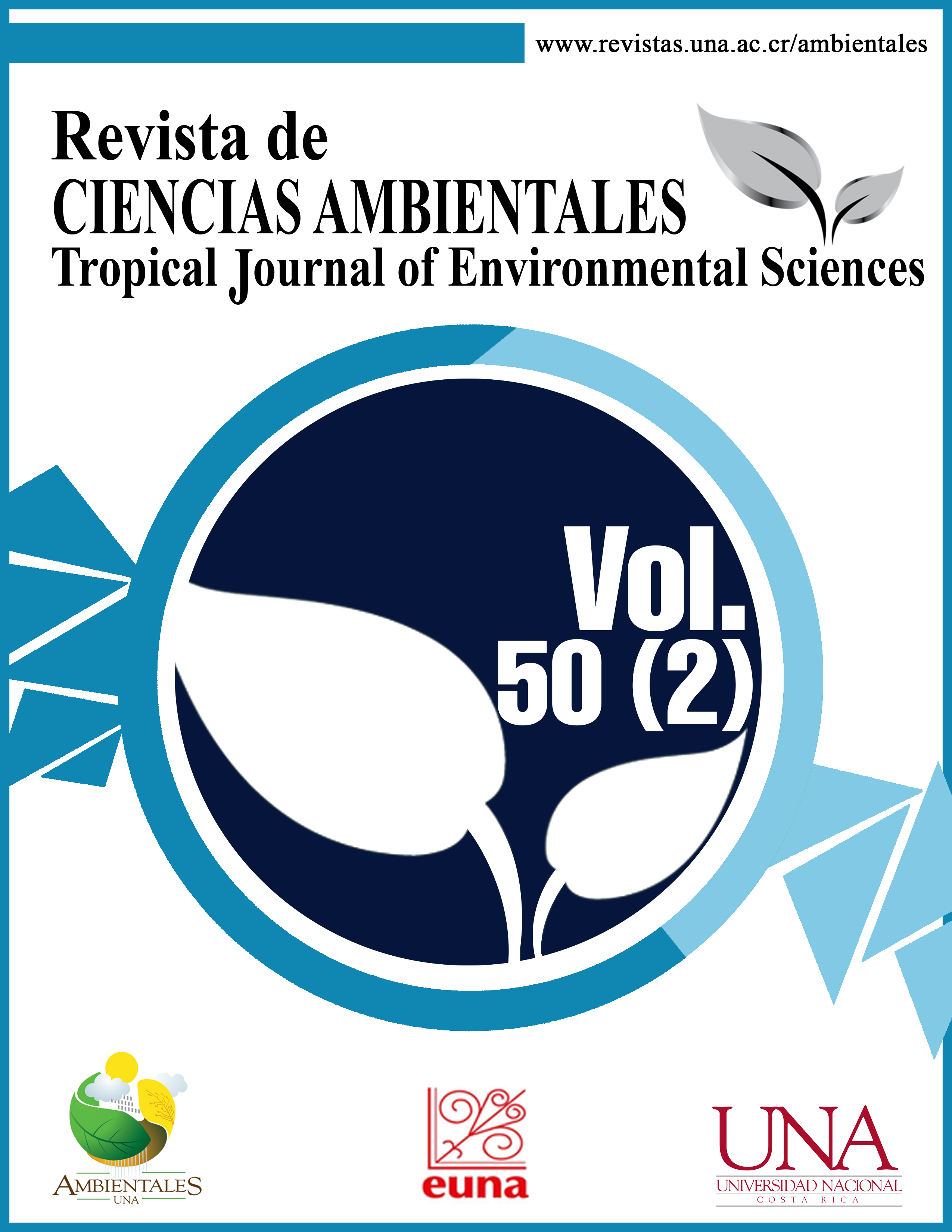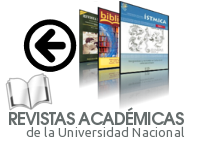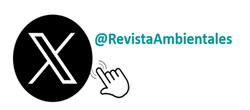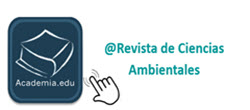Implementation of the Sulfur Hexafluoride Technique in Costa Rica to Quantify Enteric Methane in Cattle
DOI:
https://doi.org/10.15359/rca.50-2.5Keywords:
Grazing, livestock, methane emission, SF6, tropical grasses.Abstract
In order to implement, for the first time in Costa Rica, the sulfur hexafluoride (SF6) tracer technique to determine the enteric methane (CH4)released by cattle consuming tropical forages, this study was carried out at the Universidad Tecnica Nacional, Atenas, from May to July 2013. This technique allows capturing and storing a sample of methane in a device placed over the animal. The implementation was done in two phases: confinement and grazing. In both phases, Jersey heifers were used. They were subjected to an adaptation phase prior to the collection of gas samples. Confinement diet consisted of transvala silopaca (Digitaria decumbens) and Brachiaria brizantha. In the second phase B. decumbens was grazed. The three species had 35 days of regrowth without fertilization. The daily emission of methane per heifer in confinement was 147±7 g, and 17.3±1.1 g kg-1 DM consumed. During the grazing phase, heifers released 141±16 g of CH4 d-1, and 16.1±1.1 g of CH4 kg-1 DM of consumed grass was estimated. The emission factor (Ym: 4.9 ± 0.3%) for the grazing phase was lower than that suggested by IPCC. It is concluded that this technique is suitable for use under similar conditions to those used in this research, and with the calculation of Ym it is possible to estimate with low uncertainty, the emission of enteric methane in cattle that should be used in the National Inventories Greenhouse Gases for the livestock sector in Costa Rica.
References
Blaxter, K. y Clapperton, J. (1965). Prediction of the amount of methane produced by ruminants. Br. J. Nutr., 19, 511-522. doi: https:/doi.org/10.1079/bjn19650046
Boadi, D., y Wittenberg, K. (2002). Methane production from dairy and beef heifers fed forages differing in nutrient density using the sulphur hexafluoride (SF6) tracer gas technique. Can. J. Anim. Sci., 82, 201–206. doi: https:/doi.org/10.4141/a01-017
Bunglavan, S. (2014). Methanogenesis and recent techniques for mitigation of methanogenesis in ruminants. J. Livestock Sci., 5, 35-48.
Clark, H., Kelliher, F., y Pinares-Patiño, C. (2011). Reducing CH4 emissions from grazing ruminants in New Zealand: Challenges and opportunities. Asian-Australian J. Anim. Sci., 24(2), 295-302. doi: https:/doi.org/10.5713/ajas.2011.r.04
Chacón, A., Jiménez, G., Montenegro, J., Sasa, J., y Blanco, K. (2014). Inventario nacional de emisión de gases con efecto invernadero y de absorción de carbono en Costa Rica en el 2010. San José, Costa Rica: MINAE-IMN.
DeRamus, H., Clement, T., Giampola, D., y Dickison, P. (2003). Methane emissions of beef cattle on forages: Efficiency of grazing management systems. J. Environ. Qual. 32, 269-277. doi: https:/doi.org/10.2134/jeq2003.2690
Dini, Y. (2012). Emisión de metano entérico de vacas lecheras en pastoreo de praderas dominadas por gramíneas o por leguminosas (Tesis de maestría). Universidad de la República, Uruguay.
Eckard, R., Grainger, C., y de Klein, C. (2010). Options for the abatement of methane and nitrous oxide from ruminant production: a review. Livest. Sci., 130, 47–56. doi: https:/doi.org/10.1016/j.livsci.2010.02.010
Eun, J., Fellner, V., y Gumpertz, M. (2004). Methane production by mixed ruminal cultures incubated in dual-flow fermenters. J. Dairy Sci., 87,112-121. doi: https:/doi.org/10.3168/jds.S0022-0302(04)73148-3
Grainger, C., y Beauchemin, K. (2011). Can enteric methane emissions from ruminants be lowered without lowering their production? Anim. Feed Sci. Technol., 166–167, 308–320. doi: https:/doi.org/10.1016/j.anifeedsci.2011.04.021
Grainger, C., Clarke, T., McGinn, S., Auldist, M., Beauchemin, K., Hannah, M., Waghorn, G., Clark, H., y Eckard, R. (2007). Methane emissions from dairy cows measured using the sulfur hexafluoride (SF6) tracer and chamber techniques. J. Dairy Sci., 90, 2755–2766. doi: https:/doi.org/10.3168/jds.2006-697
Hegarty, R., Goopy, J., Herd, R., y McCorkell, B. 2007. Cattle selected for lower residual feed intake have reduced daily methane production. J. Anim. Sci., 85, 1479–1486. doi: https:/doi.org/10.2527/jas.2006-236
Herrero, M., Gerber, P., Vellinga, T., Garnett, T., Leip, A., Opio, C., Westhoek, H., Thornton, P., Olesen, J., Hutchings, N., Montgomery, H., Soussana, J., Steinfeld, H., y McAllister, T. (2011). Livestock and greenhouse gas emissions: The importance of getting the numbers right. Animal Feed Science and Technology, 166–167, 779–782. doi: https:/doi.org/10.1016/j.anifeedsci.2011.04.083
Haydock, K., y Shaw, N. (1975). The comparative yield method for estimating dry matter yield of pasture. Australian J. Experimental Agriculture and Anim. Husbandry, 15, 663-670. doi: https:/doi.org/10.1071/ea9750663
Intergovernmental Panel on Climate Change. 2006. Climate change 2006: The scientific basis. Cambridge University Press, Cambridge, UK.
Johnson, K., Westberg, H., Michal, J., y Cossalman, M. 2007. The SF6 trace technique: methane measurement from ruminants. En H. Makkar and P. Vercoe (Eds.), Measuring methane production from ruminants (Chapter 3, pp. 33-67). New York: Springer.
Johnson, K., Huyler, M., Westberg, H., Lamb, B., y Zimmerman, P. (1994). Measurement of methane emissions from ruminant livestock using a SF6 tracer technique. Environ. Sci. Tech., 28, 359-362.
Johnson, K., y Johnson, D. (1995). Methane emissions in cattle. J. Anim. Sci., 73, 2483-2492. doi: https:/doi.org/10.2527/1995.7382483x
Lassey, K., Piñares-Patiño, C., Martin, R., Molano, G., y McMillan, A. (2011). Enteric methane emission rates determined by the SF6 tracer technique: Temporal patterns and averaging periods. Anim. Feed Sci. and Technol., 166–167,183-191. doi: https:/doi.org/10.1016/j.anifeedsci.2011.04.066
Lassey, K. (2004). Livestock methane emission: measurement methods, inventory estimation, and the global methane cycle. Agric. For. Meteorol., 142,120–132. doi: https:/doi.org/10.1016/j.agrformet.2006.03.028
Lassey, K., Piñares-Patiño, C., y Ulyatt, M. (2002). Methane emission by grazing livestock: some findings on emission determinants. En J. Ham, A. Baede, L. Meyer, R. Guicherit and J. Williams-Jacobs (Eds.), Non-CO2 Greenhouse Gases: Scientific understanding, control options and policy aspects (January 21-23. p. 95-100). Maastricht, Netherlands.
McGinn, S., Beauchemin, K., Iwaasa, A., y McAllister, T. (2006). Assessment of the sulfur hexafluoride (SF6) tracer technique for measuring enteric methane emissions from cattle. J. Environ. Qual., 35, 1686-1691. doi: https:/doi.org/10.2134/jeq2006.0054
Moe, P., y Tyrrell, J. (1979). Methane production in dairy cows. J. Dairy Sci. 62,1583-1586. doi: https:/doi.org/10.3168/jds.s0022-0302(79)83465-7
Montenegro, J., Abarca, S. (2001). Importancia del Sector agropecuario costarricense en la mitigación del calentamiento global. Costa Rica. Ministerio de Agricultura y Ganadería, San José.
Moysés, C. (2007). Emissão de metano por bovinos Nelore ingerindo Brachiaria brizantha em diferentes estádios de maturação (Tesis de maestria). Universidade de São Paulo.
Pedreira, M., Primavesi, O., Aparecida, M., Frighetto, R., de Oliveira, S., y Berchielli, T. (2009). Ruminal methane emission by dairy cattle in Southeast Brazil. Sci. Agric. (Piracicaba, Braz.), 66(6), 742-750. doi: https:/doi.org/10.1590/s0103-90162009000600004
Primavesi, O., Shiraishi, R., Pedreira, M., de Lima, M., Berchielli, T., y Barbosa, P. (2004). Metano entérico de bovinos leiteiros em condições trapicáis brasileiras. Pesquisa Agropecuaria Brasileira, 39(3), 277-283. doi: https:/doi.org/10.1590/S0100-204X2004000300011
Tallec, T., Klumpp, K., Hensen, A., Rochette, Y., y Soussana, J. (2012). Methane emission measurements in a cattle grazed pasture: a comparison of four methods. Biogeosciencies Discuss, 9, 14408-14436. doi: https:/doi.org/10.5194/bgd-9-14407-2012
Tan, H., Sieo, C., Abdullah, N., Liang, J., Huang, X., y Ho, Y. (2011). Effects of condensed tannins from leucaena on methane production, rumen fermentation and populations of methanogens and protozoa in vitro. Anim. Feed Sci. Technol., 169, 185–193. doi: https:/doi.org/10.1016/j.anifeedsci.2011.07.004
Velásquez, R. (2005). Selectividad animal de forrajes herbáceos y leñosos en pasturas naturalizadas en función de dos épocas, manejo y condición de paisajes en Muy Muy, Nicaragua (Tesis de maestría). CATIE, Turrialba, Costa Rica.
Waghorn, G., y Hegarty, R. (2011). Lowering ruminant methane emissions through improved feed conversion efficiency. Anim. Feed Sci. and Technol., 166–167, 291-301. doi: https://doi.org/10.1016/j.anifeedsci.2011.04.019
Downloads
Published
How to Cite
Issue
Section
License

This work is licensed under a Creative Commons Attribution-NonCommercial-ShareAlike 4.0 International License.



















